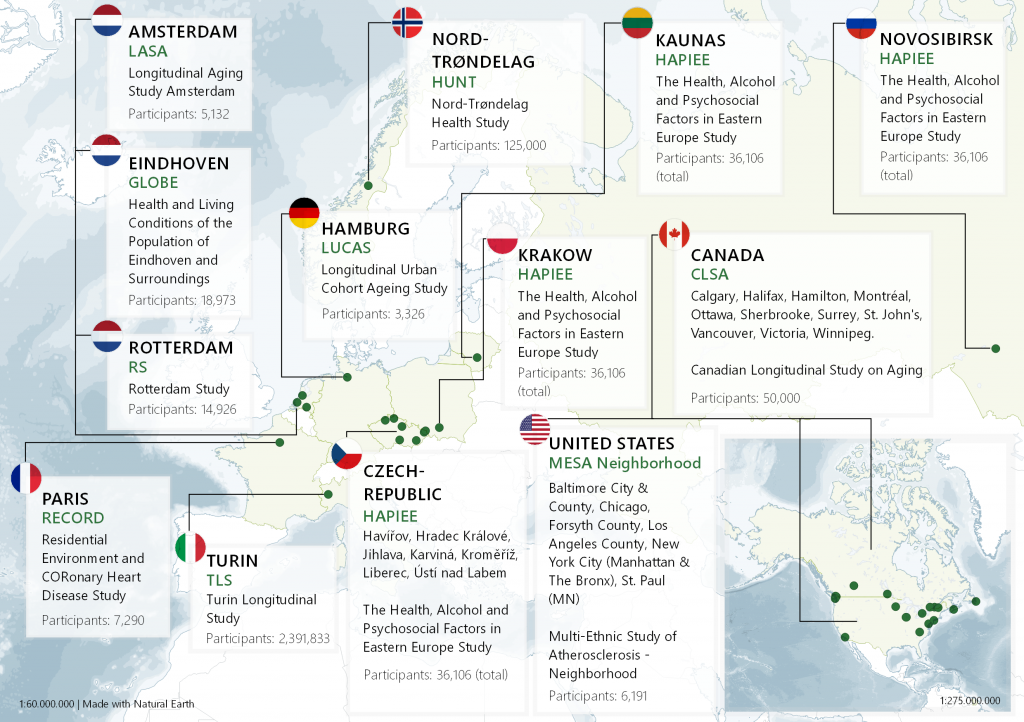A collaborative MINDMAP study design paper titled ‘MINDMAP: establishing an integrated database infrastructure for research in ageing, mental well-being, and the urban environment’ was published in BMC Public Health. This collaborative paper discusses the database infrastructure of the MINDMAP project, and the innovative ways in which many data sources are linked in order to create new research opportunities.
MINDMAP aims to achieve its research objectives by bringing together longitudinal studies from 11 countries covering over 35 cities linked to databases of area-level environmental exposures and social and urban policy indicators. The infrastructure supporting integration of this data will allow multiple MINDMAP investigators to safely and remotely co-analyse individual-level and area-level data. Individual-level data is derived from baseline and follow-up measurements of ten participating cohort studies and provides information on mental well-being outcomes, sociodemographic variables, health behaviour characteristics, social factors, measures of frailty, physical function indicators, and chronic conditions, as well as blood derived clinical biochemistry-based biomarkers and genetic biomarkers.
Cities pose major challenges for older citizens, but also offer opportunities to develop, test, and implement policies, services,infrastructure, and interventions that promote mental well-being – Beenackers & Doiron et al. 2018
The MINDMAP cohorts are located in different cities in both Europe and North America, which makes for a great amount of variation between data. This will allow the MINDMAP researchers to draw stronger conclusions on how different environments relate to health outcomes. Area-level information on physical environment characteristics (e.g. green spaces, transportation), socioeconomic and sociodemographic characteristics (e.g. neighbourhood income, residential segregation, residential density), and social environment characteristics (e.g. social cohesion, criminality) and national and urban social policies is derived from publically available sources such as geoportals and administrative databases. The linkage, harmonization, and analysis of data from different sources are being carried out using piloted tools to optimize the validity of the research results and transparency of the methodology.
The MINDMAP research combines population-based cohort data with publicly available datasets not typically used for ageing and mental well-being research. Integration of various data sources and observational units into a single platform will help to explain the differences in ageing-related mental and cognitive disorders both within as well as between cities in Europe, the US, Canada, and Russia and to assess the causal pathways and interactions between the urban environment and the individual determinants of mental well-being and cognitive ageing in older adults.
Integration of various data sources and observational units into a single platform will facilitate multilevel analyses exploring the influence of individual-and area-level determinants of mental well-being. In the end, this infrastructure will help to explain the differences in ageing-related mental and cognitive disorders both within as well as between cities around the world and assess the causal pathways and interactions between the urban environment and the individual determinants of mental well-being and cognitive ageing in older adults – Beenackers & Doiron et al. 2018



